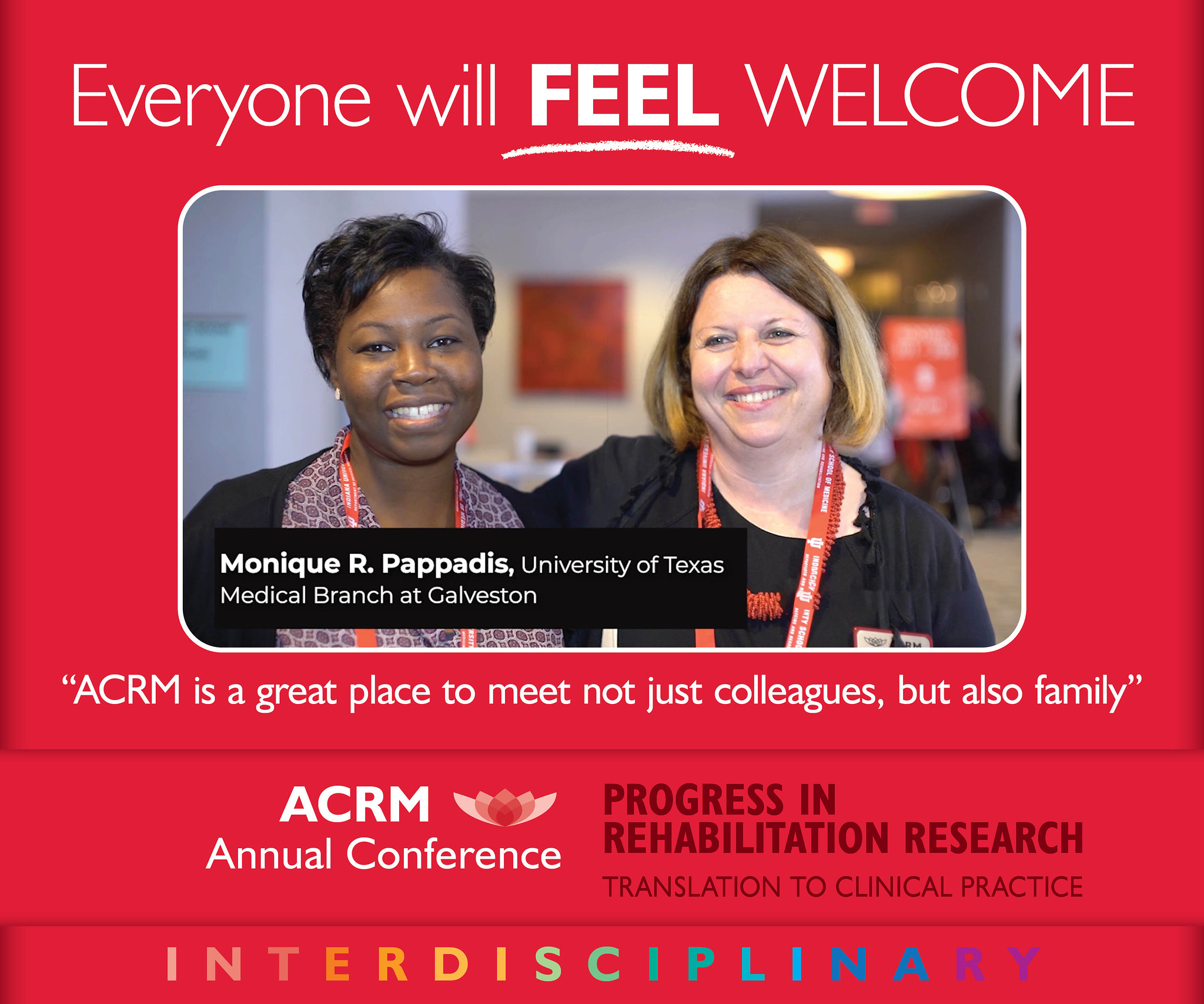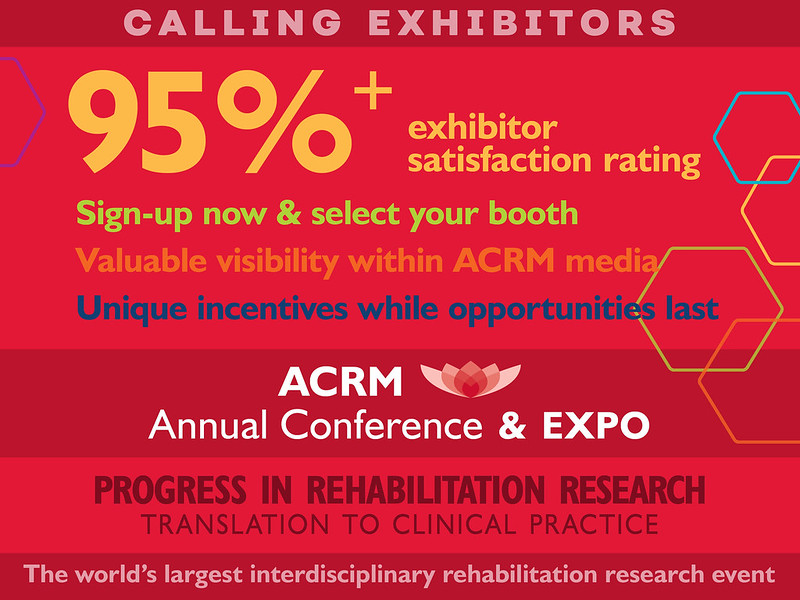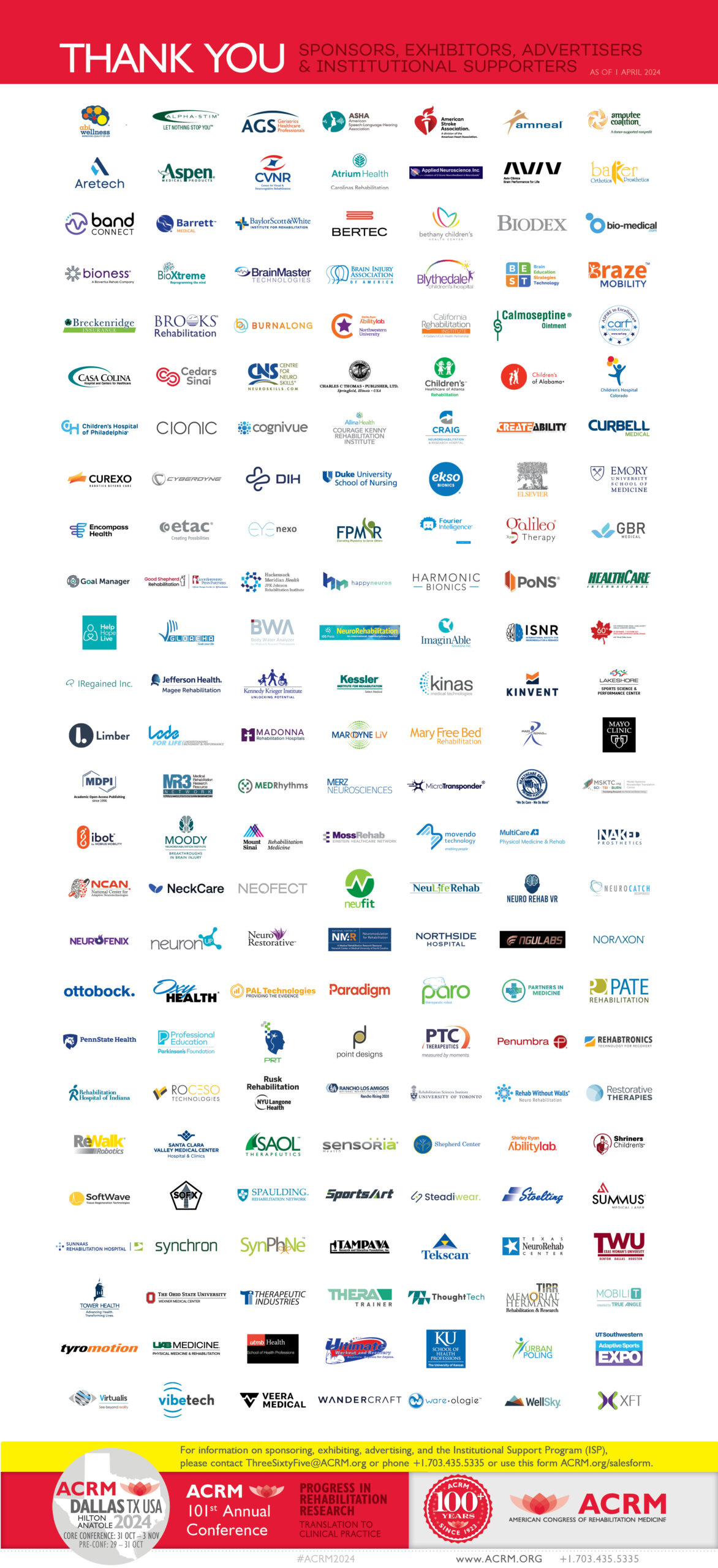Rehab Measures Database Task Force
PURPOSE
To develop and enhance RMD website content to aid rehabilitation clinicians’ understanding, selection, and utilization of standardized assessments.
RESPONSIBILITIES
- Identify additions or modifications to improve usefulness of RMD content.
- Facilitate interdisciplinary collaboration and communication between rehabilitation researchers, educators, students, and clinicians to optimize utilization of standardized assessments.
- Educate and promote the RMD through participation in professional events, including publishing instrument tear sheets in Archives of Physical Medicine & Rehabilitation.
If you are interested in joining this task force, please reach out to the chair, Allen Heinemann.
CHAIR

Allen W. Heinemann, PhD, ABPP (RP), FACRM
Co-Editor-in-Chief, ACRM Archives of Physical Medicine and Rehabilitation
JOIN THE TASK FORCE
Thank you for being a part of the M-ISIG Rehab Measures Database Task Force! We love that the ACRM attracts the most passionate interdisciplinary mix of rehabilitation pros from around the world. What an honor to collaborate with such driven individuals. We hope to meet with you at our upcoming networking group meeting to discuss current projects and opportunities for contribution and collaboration.
ACRM M-ISIG Rehab Measures Database Task Force Meeting
Join us to discuss the 2024 ACRM Annual Conference, Task Force updates, and new projects.
DATE: Contact Chair for meeting dates and times.
We hope to see you there!
RULER STATEMENT
With the exponential growth of studies applying Rasch analysis to evaluate rehabilitation outcome assessments for use in the clinic and in research, there is a need to provide guidance for consistent and transparent reporting.
The Rasch Reporting Guidelines in Rehabilitation Research (RULER) statement provides a peer-reviewed, evidence-based, and consistent guidance for reporting studies that apply Rasch Measurement (RM) Theory in a rehabilitation context so that authors, reviewers, and editors have uniform expectations on how to write and evaluate research on rehabilitation outcome assessments. The RULER statement is a framework of 6 domains reflecting primary areas of considerations in studies that report the application of RM Theory in developing and refining Rehabilitation Assessments; a checklist of items considered central to ensuring maximum transparency and reproducibility RM analysis. The RULER statement is supported by the RULER explanation and elaboration documents (2 manuscripts in development), an iteration table, and other supplemental materials available below.
2023 GOALS
- Continue to grow the RMD summaries and collaborators
- Update platform
- Conference Symposium
2021 – 2022 ACCOMPLISHMENTS
- 2022 Symposium: Imagining the Future of the RMD
- 2022 Symposium: Applying Person-Centered Measurement in Rehabilitation Practice
- CDE Search Instructions updated to Author Toolkit
- Infographics added for Timed Up and Go and Modified Ashworth Scale
2020 – 2021 ACCOMPLISHMENTS
- Addition of Clinical Practice Guidelines, CDE’s, and EDGE Group Recommendations to RMD website and Author Toolkit
- Initiated “RMD Measure of the Week” social media campaign to increase engagement on Twitter, LinkedIn, and Facebook
- Collaborators in new disciplines (rehabilitation psychology, pediatrics)
- ACRM 2021 symposia
- Published instrument tear sheets in Archives of Physical Medicine & Rehabilitation
- Monthly RMD Task Force Meetings
2021 – 2022 PLANS & PROJECTS
- Collaborate with new graduate programs in various rehabilitation disciplines.
- Continue incorporating clinical practice guidelines and other professional recommendations into instrument summaries on RMD website.
- Update clinician and student educational modules on RMD website.
- Train and maintain student volunteers and collaborators to produce instrument summaries.










